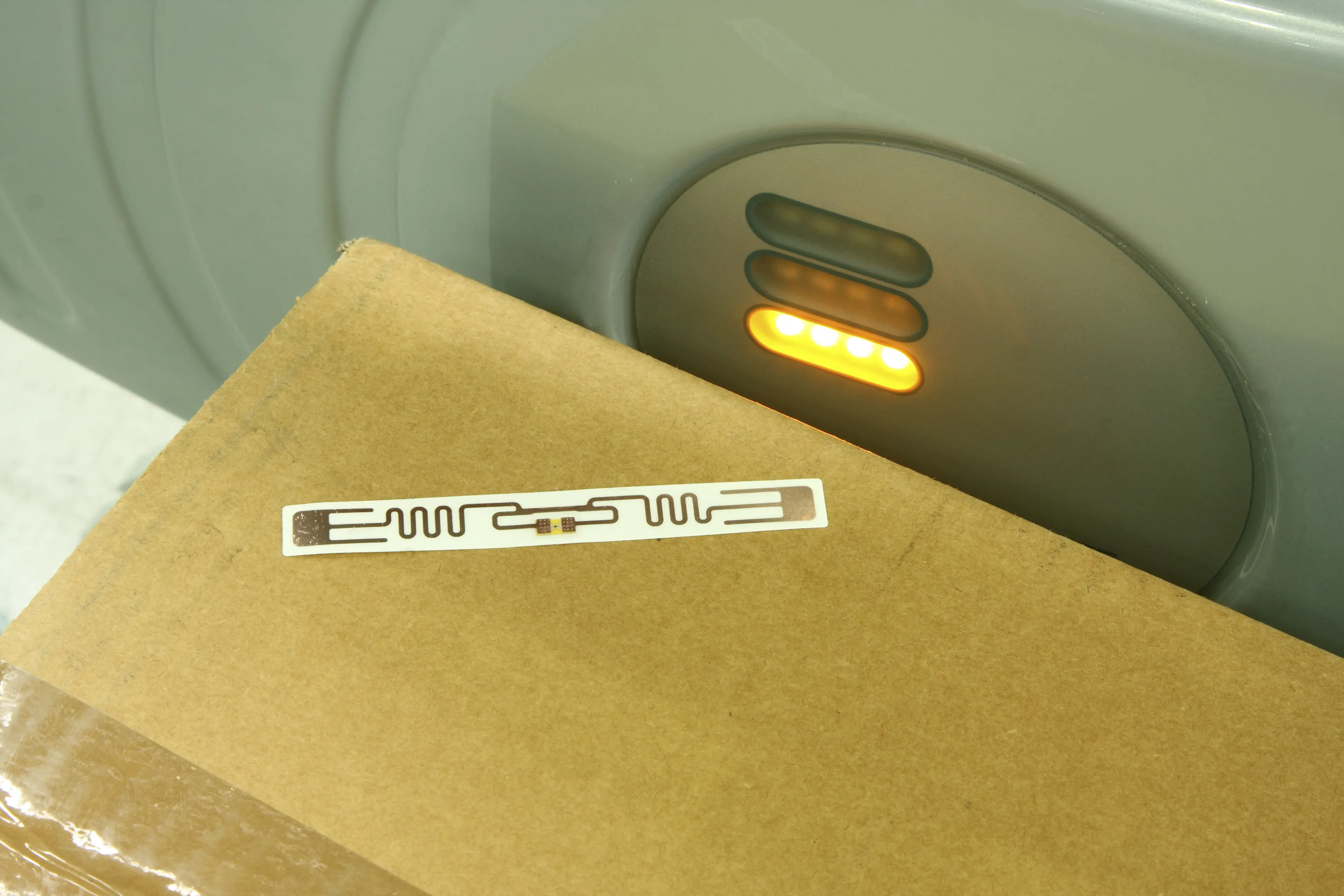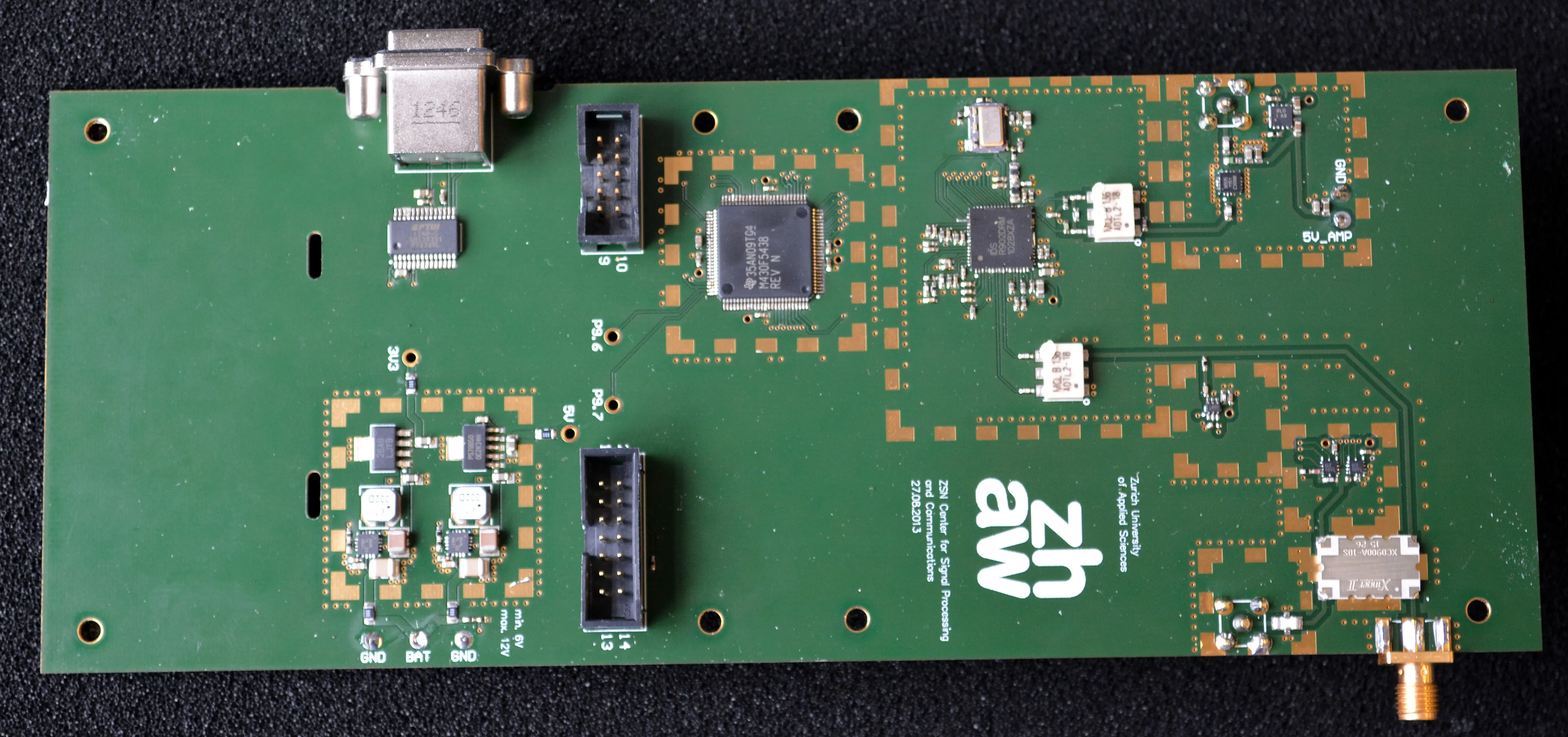Implementation of RFID readers for fairly long distances
RFID chips are widespread. Their use becomes problematic if the spatial distance between the reader and the information carrier is more than a few metres. Since the reader then has to emit more power, interference is caused by crosstalk from the transmission signal to the receiver. Within the framework this MSc thesis, this problem was investigated in more detail and solved in a practical manner.
Read data quickly and easily
Whether it’s clothes, books or package deliveries, a “radio frequency identification” label (or RFID tag for short) is now found on many products in place of barcode stickers. Thanks to this technology, information can be read wirelessly. This means that objects can be identified automatically and on a contactless basis. For the RFID technology in the UHF range (868 MHz), distances of up to ten metres are reached without the tag needing a battery. Other areas of application include access controls, logistics applications and passive sensors, to give just a few examples.
Distance as a cause of interference
For mobile applications in the UHF range, the usual distance between the reader and information carrier is four metres. The reading process takes place in two phases: the reader emits a high-power signal that charges the chip with energy. This then sends back the information it contains. As soon as RFID chips need to be read from a distance of more than four metres, however, transmission problems arise. The signal of the reader, which should continue to supply the chip with energy, has to be emitted with higher power. At the same time, the chip’s response signal becomes weaker and weaker due to the distance. The reading process thus now experiences self-interference.
Separating the signals
In an MSc thesis at the Institute of Signal Processing and Wireless Communications (ISC), a solution that is optimal in theory was to be refined and developed. On behalf of an industrial partner, the task was to develop a new front-end for a reader that makes possible a marked increase in distance. A highly effective yet cost-efficient method for the adaptive suppression of the transmission signal for the receiver input first had to be found and implemented. The performance of the innovative solution was subsequently verified by building a demonstrator. Since the MSc thesis was conceived as preparation for an industrial project, work was carried out from the very outset with a view to future series production. Going forward, the need for greater ranges will grow, since the sensitivity of RFID chips is increasing more and more. The issue of self-interference will therefore continue to gain in relevance. Innovative and sustainable solutions, such as were implemented within the framework of this project, are therefore pioneering.
About the author of the thesis
Marcel Koller graduated with a Master of Science in Engineering (MSE). His MSc thesis, entitled “Front-end for a handheld UHF reader”, was conducted and supervised at the Institute of Signal Processing and Wireless Communications with a specialisation in Electronics and Radio Frequency Technology.
Supervisor: Roland Küng

